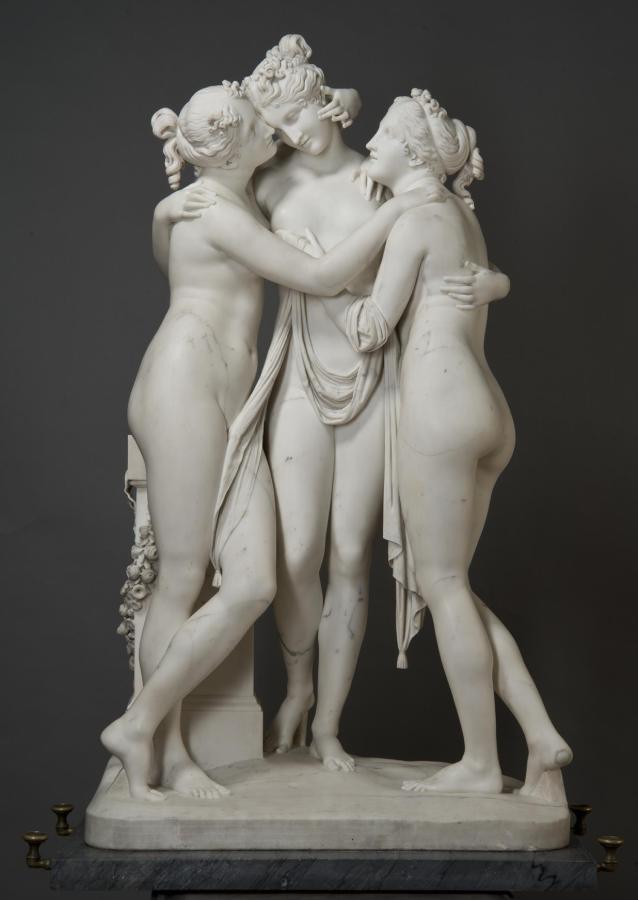Canova, Antonio (1757-1822)
Le tre Grazie (Three Graces)
1813–1816
Marble, h. 182 cm
Hermitage Museum, Saint Petersburg
A late work by Canova, The Three Graces was produced at a time when the artist was so famous that the public eagerly awaited each new work. Faithful to the Neoclassical ideal, Canova embodied his perceptions of beauty in the form of the ancient goddesses who were said to personify feminine charm. Contemporaries praised the work for its new approach to the subject. Unlike compositions which derived from Classical Antiquity – where the outer figures turn out towards the viewer and the central figure embraces her friends with her back to us – Canova‘s figures stand side by side, all facing each other. The three slender female figures become one in their embrace, united not simply by their joined hands, but also by the scarf which drops from the hand of one of them. Canova‘s composition is compact and balanced. The girls stand around a sacrificial altar on which there are three wreaths of flowers and a garland symbolizing their tender ties. Contemporaries thought that Canova had so far captured the ideal of beauty that they said of the statue “It is more beautiful than beauty itself”. (SHM)
